Getting Started
If you are setting up the operator for the first time, start at Step 1.
If you are configuring an existing operator, start at Step 3.
To set up the Generic Connector:
1. Install the Generic Connector
- Go to Settings > Connectors.
- Click + Install Connector.

- Select Generic (segment-based) as the connector type and click Next.
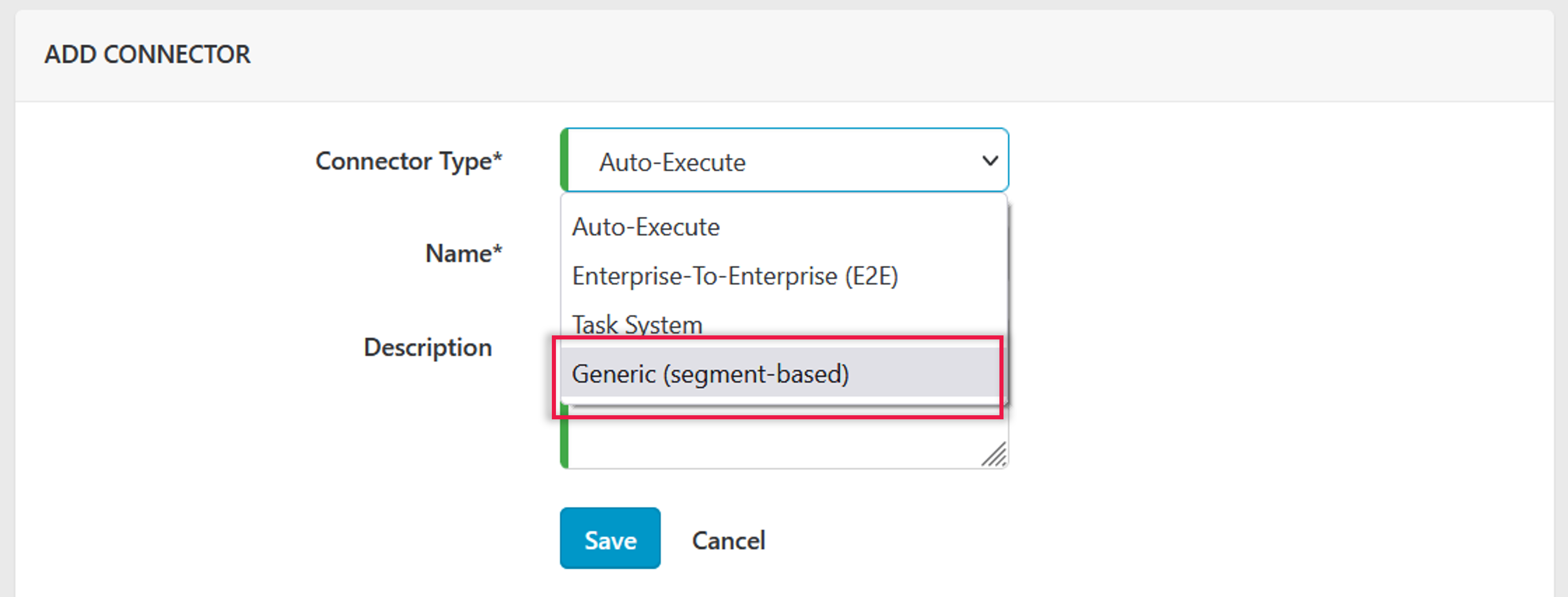
Don't see Generic (segment-based)?
This means that the Generic Connector has already been installed. Proceed to Step 2 to add the operator.
- Fill in the name and description of the operator and click Save. Once the connector is added, you will see the connector information.

2. Add the Operator
In this step, you will add the operator to the enterprise using the Generic Connector you have installed in Step 1.
- Go to Settings > Networks and select the Network Group Name (in this example, Demo Warehouse).
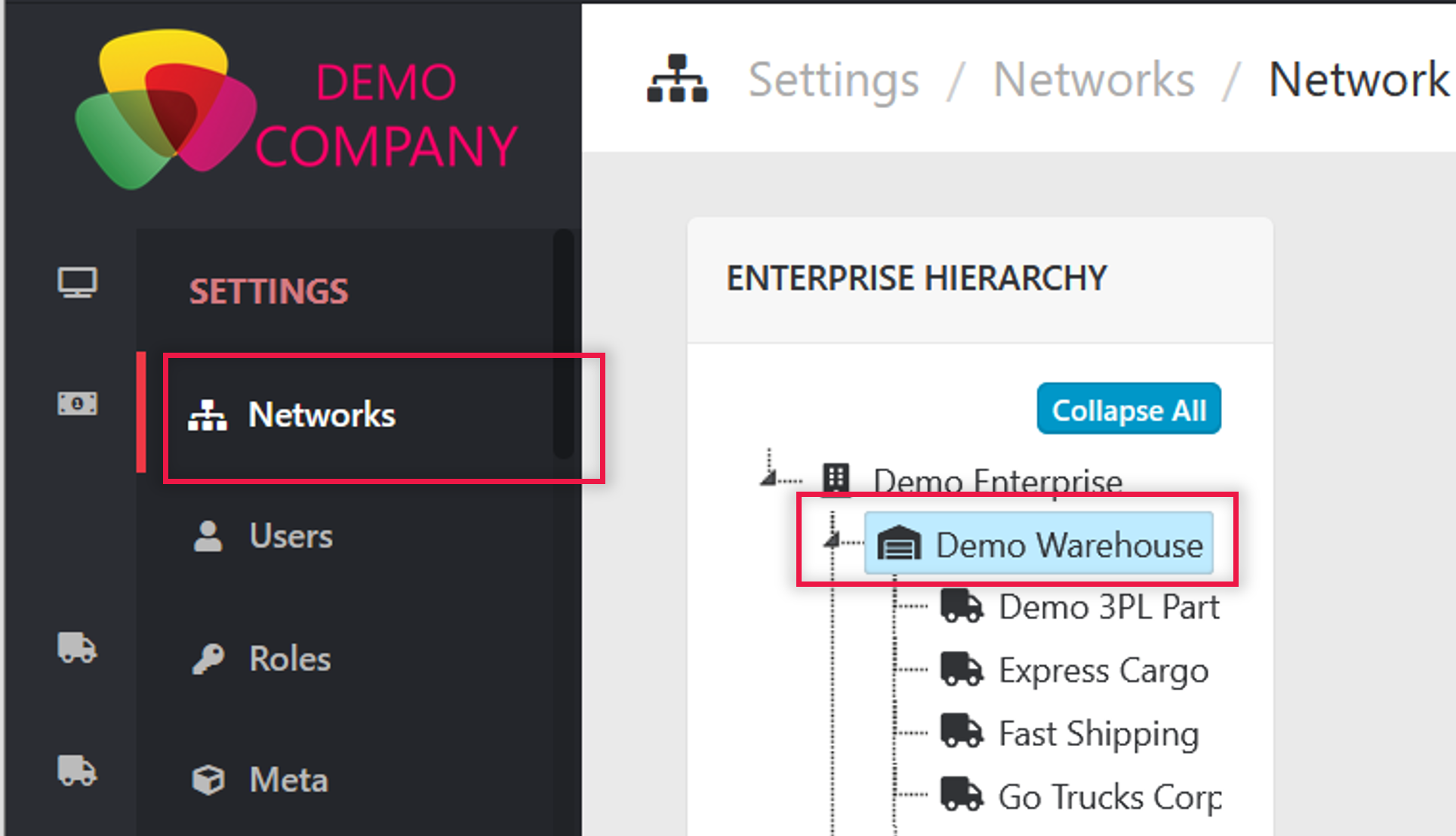
- Click + Add Network Operator.
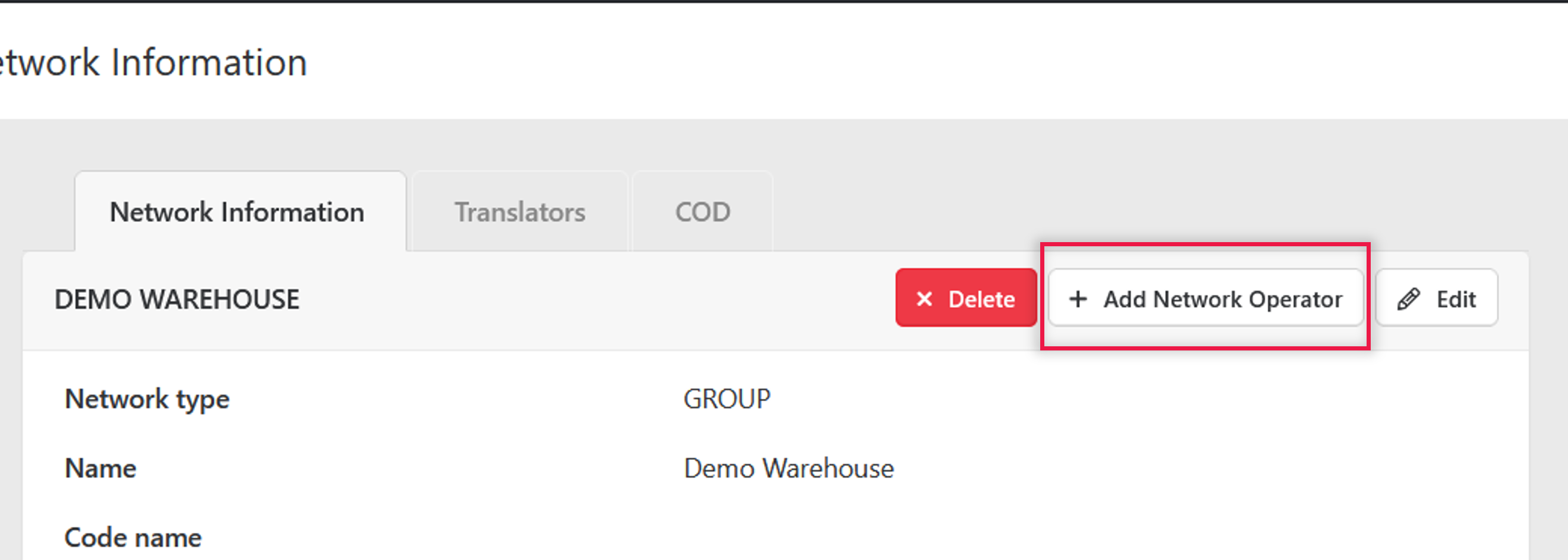
- On the Connector type field, select the Generic (segment-based).

- Fill in the rest of the form and click Save (for a step-by-step guide, see Add Operator.
3. Configure the API Settings
This configuration is for HTTP Mode (recommended). If you want to use Manual Mode, click here.
To configure the API settings:
- On the menu panel under OPERATORS, click on the operator name
(in this example, it's DEMO 3PL OPERATOR). - Go to to Settings > Settings.
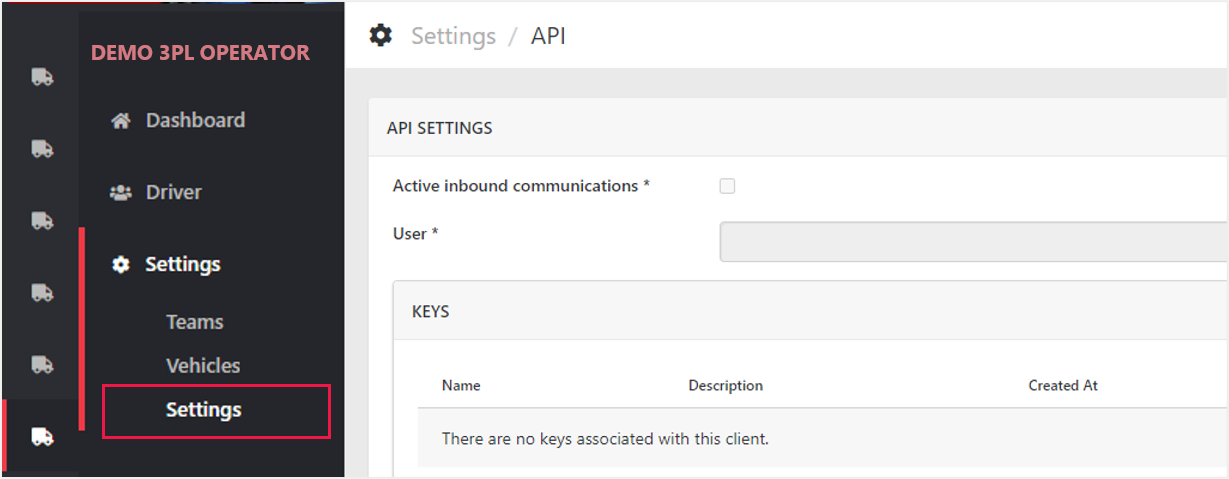
Don't see Settings?
Make sure the operator was added via Generic Connector (see Step 1-2).
- Under API SETTINGS, click Edit.

- Configure the inbound (*required):

| Field | Description |
|---|---|
| Active inbound communications* | Check to enable. This allows Zyllem to receive data from the operator. As an operator, you can send data (e.g., when the driver performs an action) or perform API calls through the inbound. To see the list of resources that the you can call, click download the API specs and see the Segment Service section. |
| User* | Select the user by which this communication will be logged under. Zyllem will process and display data based on this user's culture and time zone settings. Don't see the user? Make sure they belong to a team in the operator. |
| KEYS | To add a key for authentication, click + Add Key, enter the name and description, and click Save. |
- Configure the outbound (*required):

| Field | Description |
|---|---|
| Active outbound communications* | Check to enable. This allows Zyllem to send data to the operator. As an operator, you can receive segment-based updates (e.g., new assignments, segment changes, etc.) To see the list of endpoints that the operator needs to create, download the API specs and see the Remote Service section. |
| Base URL* | The operator endpoint that receives the data. |
| Batch size* | The number of segment updates that you allow Zyllem to send at a time (e.g, 100). This depends on the operator bandwidth. |
| CUSTOM HEADERS | If the operator requires authentication, click + Add Header, enter the Key and Value, and click Add. Do this for all custom headers. |
- Click Save, found at the upper right corner of the page.
4. Test your Integration
Your Generic Connector is now ready! Consider testing your integration by booking test items and executing actions. You may need to work with your enterprise admin to ensure that this operator is configured in the Bridge, and that your booking setup is ready.
If you are an enterprise admin, there is a step-by-step guide to configuring the Bridge and booking items.
Tips
Download the API Specs
The API specs contains the list of resources that the operators need to create (for the outbound) and the resources that they can call (via the inbound).
- On the menu panel under OPERATORS, click on the operator name.
- Go to to Settings > Settings.
- Click Download Swagger Integration at the lower left corner of the page.

The specs has two sections:
- Remote Service - (outbound) list of endpoints that the can create.
- Segment Service - (inbound) list of resources that the you can call.
In this example, Swagger.io editor was used.
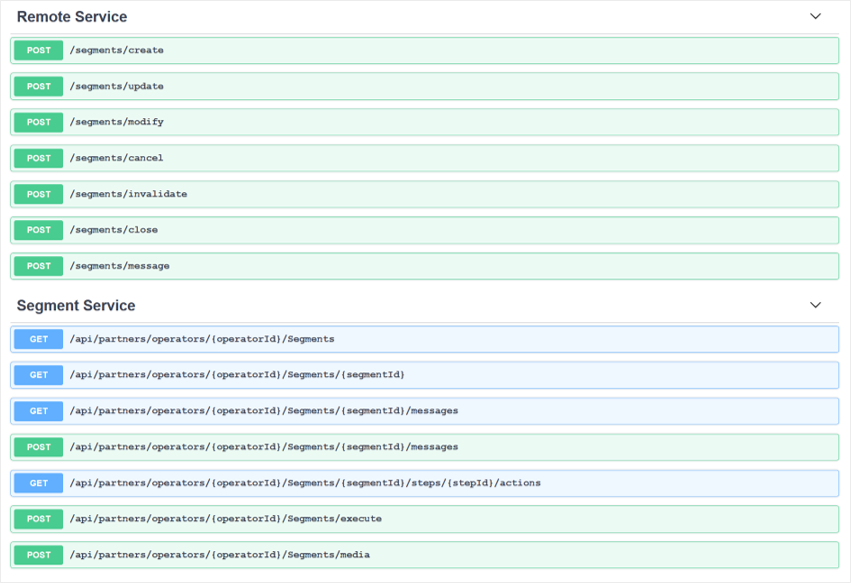
| Remote Service | Description |
|---|---|
| POST /segments/create | Create a segment for the booked item |
| POST /segments/update | Update previously created segments that have not started (e.g., Reschedule an item before the driver has picked it up) |
| POST /segments/modify | Modify previously created segments that have already started (e.g., Reschedule an item after the driver the driver has picked it up) |
| POST /segments/cancel | Cancel a segment that has already started (e.g., Cancel an item after the driver has picked it up. Depending on your configuration, this may result in a new tasks such as return) |
| POST /segments/invalidate | Invalidate a segment that has not yet started (e.g., Cancel an item before it has been picked up by the driver) |
| POST /segments/close | Close or complete a segment (e.g., Close the segment after the item is delivered. Depends on your configuration) |
| POST /segments/message | Add a message to the segment (e.g., Add a special instruction or comment) |
| Segment Service | Description |
|---|---|
| GET /api/partners/operators/{operatorId}/segments | Get a list of created segments |
| GET /api/partners/operators/{operatorId}/segments/{segmentId} | Get details of a specific segment using its segment Id |
| GET /api/partners/operators/{operatorId}/segments/{segmentId}/messages | Get a list of the messages on a certain segment |
| POST /api/partners/operators/{operatorId}/segments/{segmentId}/messages | Add a new message to a segment |
| GET /api/partners/operators/{operatorId}/segments/{segmentId}/steps/{stepId}/actions | Get the list of available actions for a certain step of a segment |
| POST /api/partners/operators/{operatorId}/segments/execute | Execute actions in bulk for a list of segment steps, with the given action inputs |
| POST /api/partners/operators/{operatorId}/media | Upload a media for future reference in an action input |
Updated almost 4 years ago
